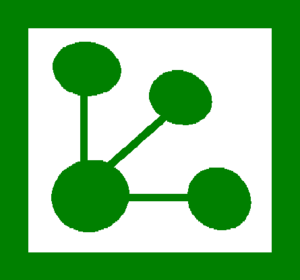
FACEBOOK makes sharing easy — too easy, some would say.
Because one’s social network often consists not only of actual friends but also relatives and sort-of friends, along with sort-of friends of their sort-of friends, you need to be careful about what you post. Yes, the site does allow you to define smaller circles of friends, but that requires constantly monitoring what should — and should not — be shared with whom.
All of this has created an opportunity for start-ups to offer sharing that is intimate by design.
Newer social networks, like Path, FamilyLeaf and Pair, offer a range of constraints. A Path network, available only on smartphones, has a maximum of 150 friends. FamilyLeaf is restricted to family members. And Pair, which like Path is for smartphones only, is as small as a social network can be: just one other person.
The average Facebook user in United States has 245 friends, according to a study published in February by the Internet and American Life Project of the Pew Research Center. That figure, however, well exceeds the “Dunbar number,” the 150 meaningful relationships that Robin Dunbar, an anthropologist, has suggested is the effective neurological limit the human brain can handle.
Dave Morin, who worked at Facebook for four years before leaving to help found Path in 2010, explains the rationale for his company this way: “Facebook has made socializing on the Internet normal. But now there is an opportunity to return to intimate socializing.”
Mr. Morin says he called Mr. Dunbar, a professor at the University of Oxford , to find out more about his research and theory. Mr. Dunbar told him that social networks resemble a set of concentric circles: 150 people constitute the outer boundary of friends, 50 is the limit for trusted friends, 15 for good friends, and 5 for best friends.
When Path introduced its social network, it capped the number of friends at 50. Today, Path has more than a million active users, and the average user has 40 friends. Last year, Path raised the maximum to 150 because, Mr. Morin says, the users “like the headroom.”
Still, the core proposition is unchanged. No subgroupings are permitted, and there are no privacy settings to adjust. Close friends are in; everyone else is out. “You’ll never experience the problem of accidentally sharing something with the wrong people,” Mr. Morin says.
FamilyLeaf limits an individual’s network in a different way: it is just for relatives. This start-up, founded just eight weeks ago by Wesley Zhao and Ajay Mehta, both 19, received financing and guidance from Y Combinator, a seed fund in Mountain View, Calif. After the site opened, demand soon exceeded capacity, and there is now a waiting list to join.
via New York Times – RANDALL STROSS ᔥ
Bookmark this page for “small social networks” and check back regularly as these articles update on a very frequent basis. The view is set to “news”. Try clicking on “video” and “2” for more articles.







